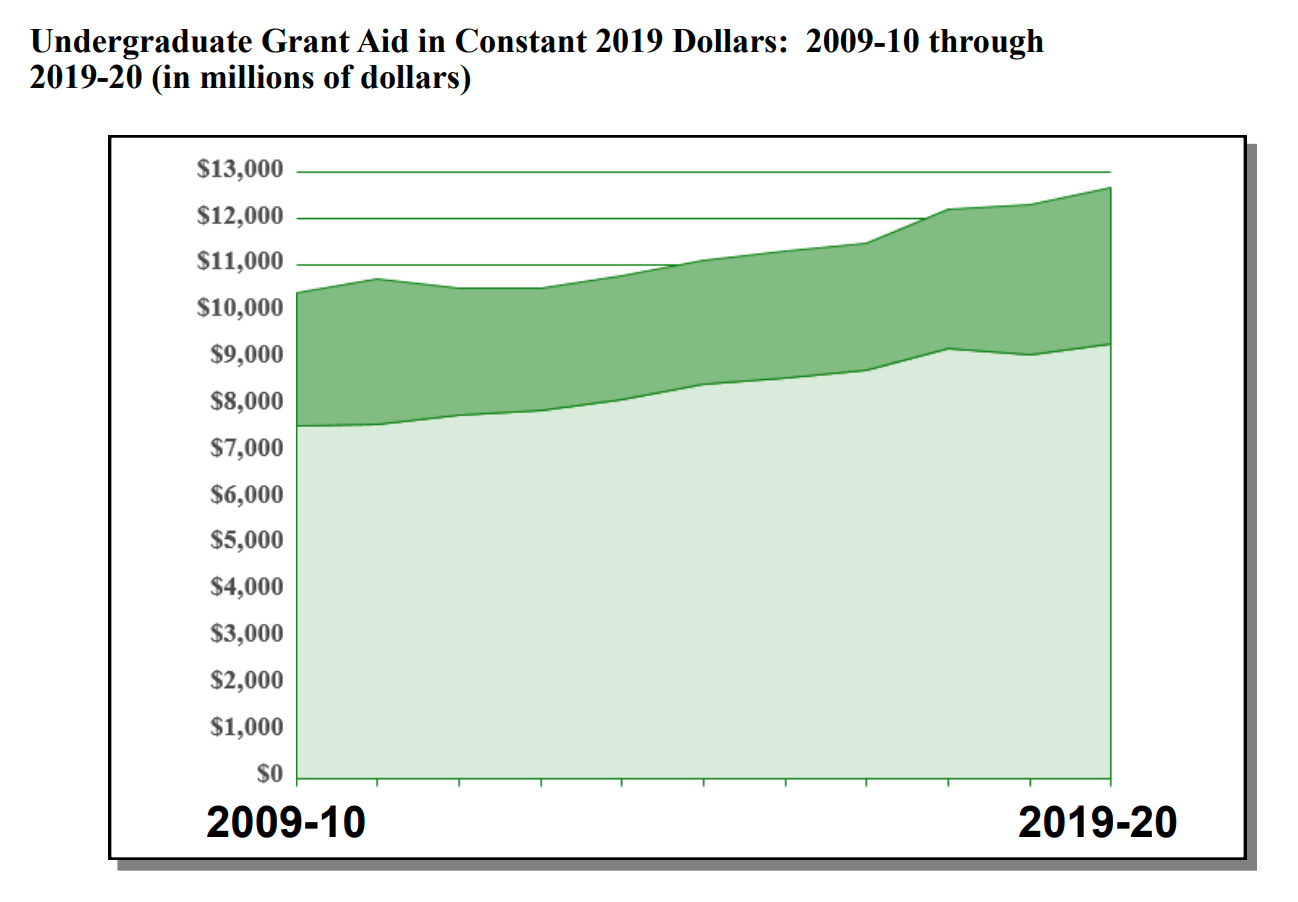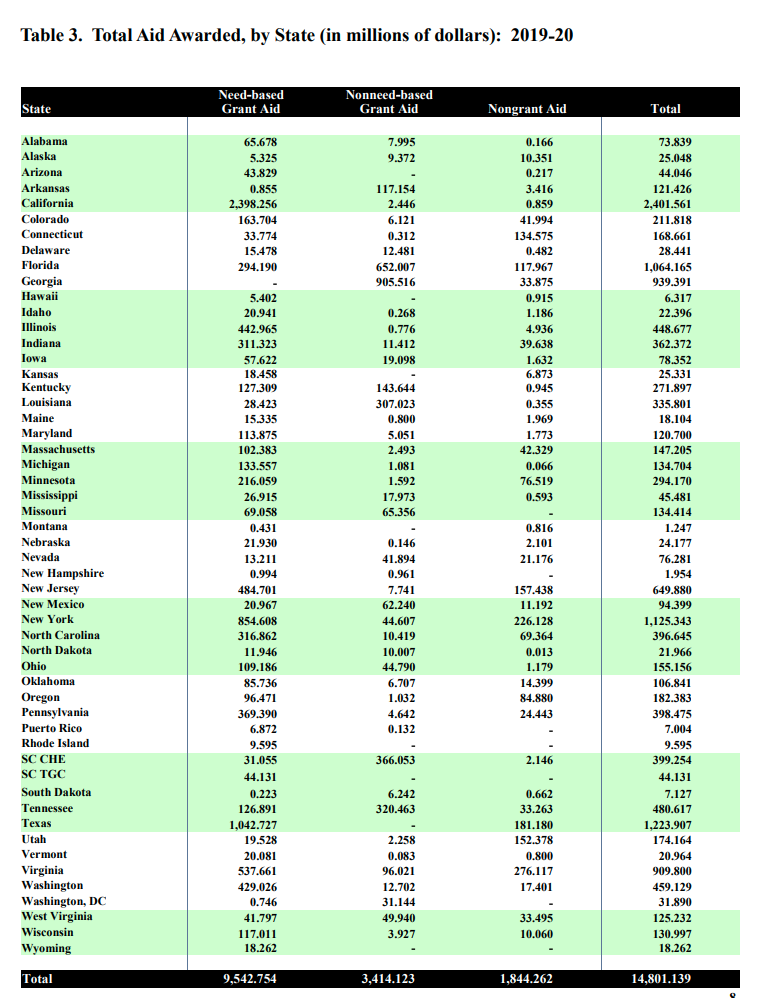You have /5 articles left.
Sign up for a free account or log in.

Many states prioritize student financial aid programs to boost enrollment and graduation rates.
Rattankun Thongbun/Getty Images
State financial aid totals continued to grow during the 2019–20 academic year, just before state budgets and family incomes were roiled by the COVID-19 pandemic, according to the latest report from the National Association of State Student Grant and Aid Programs.
States awarded about $14.8 billion in financial aid during the 2019–20 academic year, according to the NASSGAP report. That total reflects a nominal 4.5 percent increase over the $14.1 billion in financial aid awarded during the 2018–19 academic year, or a 2.6 percent increase in constant, inflation-adjusted dollars.
 Most of that total—87 percent—was handed out to students via grants, which do not need to be repaid. States doled out 4.2 million grants in the 2019–20 academic year, totaling $12.9 billion in grant aid, the report showed. States paid out another $1.8 billion in nongrant aid, about half of which took the form of tuition waivers. Loans, loan assumptions, conditional grants and work-study made up the remainder of that total.
Most of that total—87 percent—was handed out to students via grants, which do not need to be repaid. States doled out 4.2 million grants in the 2019–20 academic year, totaling $12.9 billion in grant aid, the report showed. States paid out another $1.8 billion in nongrant aid, about half of which took the form of tuition waivers. Loans, loan assumptions, conditional grants and work-study made up the remainder of that total.
Need-based grant aid for undergraduate students increased by $400 million during the 2019–20 academic year, amounting to $9.3 billion.
“This year was a relatively large increase,” said Frank Ballmann, director of federal relations at NASSGAP. “I can’t get too carried away, because two years prior we had our largest increase in the past decade, but it’s a healthy increase and spread across quite a few states.”
Eight states—California, Illinois, New Jersey, New York, Pennsylvania, Texas, Virginia and Washington—awarded more than two-thirds of the total national need-based grant aid during the 2019–20 academic year, amounting to $6.3 billion among them. California led the pack, handing out $2.4 billion in need-based grant aid that year.
Georgia, Louisiana, South Carolina, Tennessee and Virginia provided the most grant aid per capita, the report states. Meanwhile, Georgia, Louisiana, New Jersey, South Carolina and Tennessee provided the most undergraduate grant aid compared to full-time undergraduate enrollment.

State financial aid totals vary for all kinds of reasons, Ballmann said. Some states have larger populations, and hence more students that need financial assistance. Other states are seeing the opposite—demographic shifts have left them with fewer students and, therefore, smaller financial aid budgets. For many states, investment in student financial aid is a political and economic priority.
“Those sorts of states have heavily invested in … goals like ‘X percent of adults have degrees or certificates by a certain age or by a certain year,’” Ballmann said. “These states are realizing that the way to move the needle is to invest in need-based grant aid, because that’s where you’re getting the incremental increases in students who attend and hopefully graduate college.”
Katie Harrison, president of NASSGAP, echoed Ballmann’s thoughts in a statement.
“By increasing their investments in student aid programs, states are demonstrating their commitment to supporting postsecondary students and their families, and to addressing current and future workforce needs,” she wrote.
The COVID-19 pandemic—which has significantly impacted state budgets and increased financial need for many students and families—had no effect on state aid totals for the 2019–20 academic year, Ballmann said. For the most part, financial aid for that year was awarded before the pandemic began in the U.S. in March 2020.
Next year’s totals could reveal the extent to which the pandemic has affected state financial aid programs, and whether funds from the American Rescue Plan buoyed those programs.
“I’m not aware of any state that cut its programs back” during the pandemic, Ballmann said. “It’ll be interesting to see if the programs become more generous.”




